Train travel into the Ise-Shima region
by Raina, staff writer of japan-guide.com
| previous post |
| next post |
2016/06/20 - Train travel into the Ise-Shima region

Train travel in Japan is one of the most convenient ways to cover long distances across the country, and it was a no-brainer for me to take the train to Ise-Shima where the G7 Summit was held this May.
To kickoff my journey, I took the Shimakaze Sightseeing Limited Express train from Kintetsu Nagoya to Ujiyamada Station. It was my first time taking the Shimakaze, actually more like my first time taking a premium train in Japan - apart from the shinkansen (bullet train). Not only were the seats spacious and comfortable, there were large panoramic windows, free wifi as well as a cafe car on board! I was a little dismayed that my ride from Nagoya to Ujiyamada took less than 100 minutes because I'm sure I could have enjoyed the journey for at least another hour. Kintetsu Railway offers a variety of passes for foreign tourists that cover train and bus travel into the Ise-Shima region, but note that the passes do not fully cover the Shimakaze Premium Limited Express.



Arriving at the Ujiyamada Station, I took the bus for the Inner Shrine (Naiku) of Ise Jingu. Instead of taking the bus all the way to the shrine, I got off at Jingu Kaikan-mae and walked the remaining distance along the Oharaimachi, the traditional approach to the shrine. The main approach was developed to look like how it was back in the day with traditional wood facades and no power lines on the streets. Shops and restaurants line the approach and the area was bustling with activity.
Halfway down the approach is Okage Yokocho, a small district which recreates the townscape of past centuries. There are plenty of food stores and souvenir shops, as well as lots of benches to rest. One of the nicest things about the area is the ease of which visitors can snack on local delicacies while walking around, also known as tabe-aruki in Japanese. I tried a number of snacks including Ise Udon and beef croquette, and looked longingly at other snacks wishing I had more stomach space.






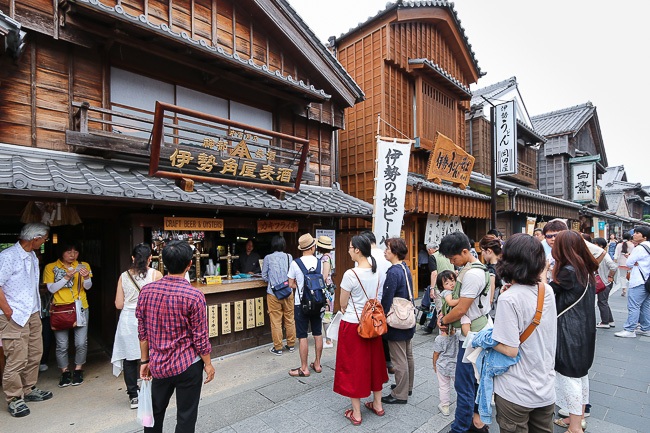


It wasn't long before I reached the entrance of the Inner Shrine (Naiku). The inner and outer shrines in Ise are Japan's most sacred Shinto shrines and together with over a hundred other smaller shrines in the city make up the Ise Shrines (Ise Jingu). Having been in existence for about 2000 years, the Inner Shrine is the oldest and most sacred of all the shrines and is where the Sun goddess Amaterasu is enshrined. Visiting the sacred Ise Shrines is something that many Japanese want to achieve at least once in their lifetime and should not be missed if you are here on holiday.
Even though the Inner Shrine is over 2000 years old, the buildings are rebuilt every 20 years according to an ancient Shinto tradition. In a way, this ensures the longevity and eternalness of the shrine, as well as the passing on of the knowledge, skills and techniques needed to built the shrine from generation to generation. Former shrine materials are donated and reused at other shrines across the country, cutting down on any wastage. For example, the huge torii gate which everyone walks under to enter the Inner Shrine grounds at the Uji Bridge is built from the main pillars that were used to support the roof of the former main sanctuary.
Once across the Uji Bridge, the atmosphere turns almost subdued, compared to the liveliness of the main approach. Such is the power of being in the presence of Shinto's most venerated deity. Most visitors take about 60 to 90 minutes to visit the Inner Shrine, and there are a number of smaller shrines on the grounds. While at most shrines in Japan, visitors give thanks and present their wishes at a single offering hall, visitors to the Inner Shrine give thanks at the main sanctuary and present their wishes at Aramatsu no Miya, a smaller shrine behind the main sanctuary.



After the shrine visit, I made my way to Kashikojima at the southern tip of the Shima Peninsula, where the G7 Summit was held this May. As a treat, I went to both the Shima Kanko Hotel The Classic and Shima Kanko Hotel The Bay Suites to check out the conditions the world leaders had to put up with during their stay in Japan. After seeing both hotels, I'm pretty sure it is safe to say that anyone who stays at either hotel will be well taken care of and definitely enjoy their stay. I'll willingly stay at either one, but if I had to choose, I have to say that I preferred The Bay Suites. What can I say, knowing that there were 50,000 pearls used as decoration in the building, and a roof top garden with a view of Ago Bay swayed me. However, The Classic hotel wasn't without its attractions either. The newly opened club lounge area had a tranquil library and an elegant music listening room.


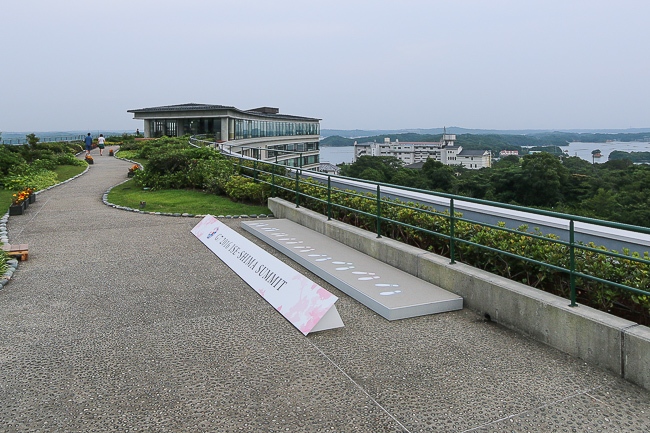

The next day, I visited the Yokoyama Observatory Deck to get a view of Ago Bay. The observatory deck stands 203 meters above sea level on the slopes of Mount Yokoyama and affords panoramic views of the bay. I could see the nearby Kashikojima and both the Shima Kanko Hotels!
Then I made my way to Osatsu in the middle of the peninsula. Osatsu is off the beaten track for most travelers, but those who make the trek here will not be disappointed. Stopping at Shinmei Shrine, I paid a visit to Ishigami-san, a goddess who supposedly grants the wishes of women. I was a little skeptical initially, but was convinced when most of the other visitors were young women going to offer their prayers.
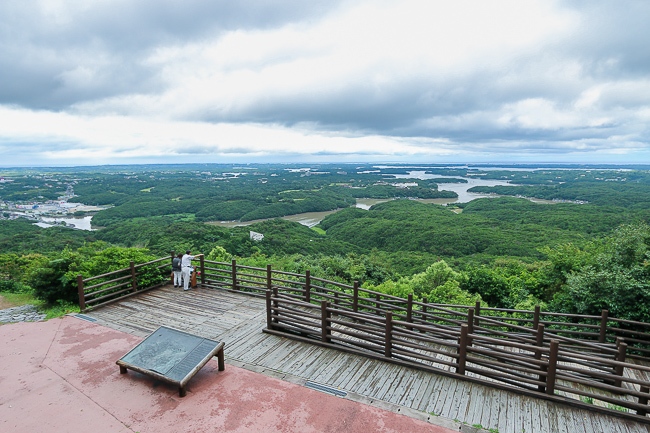



My next stop was for lunch at the Hachimankamado Amagoya, a women's diver hut where visitors can enjoy grilled seafood and talking to the female divers. An Ama is a female diver that typically dives for shellfish and seaweed. It takes years of practice to become a professional Ama. Lunch was a lavish spread of fresh shellfish grilled on the spot - so fresh they were trying to escape before being cooked - and conversation with the Ama. Truly an experience not to be missed! For those with smaller appetites or who are short on time, you can consider having tea with a smaller portion of shellfish instead of a full meal.


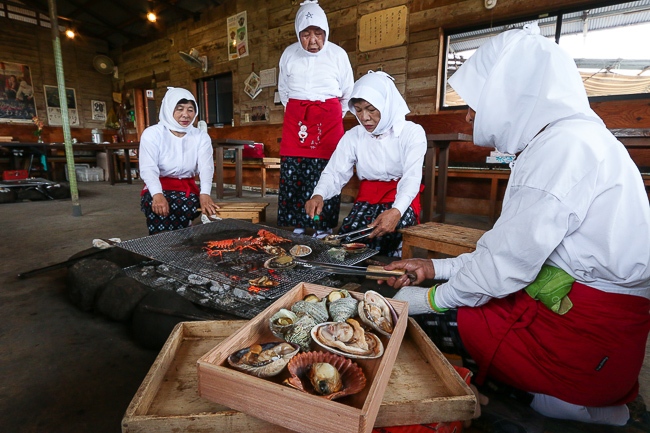


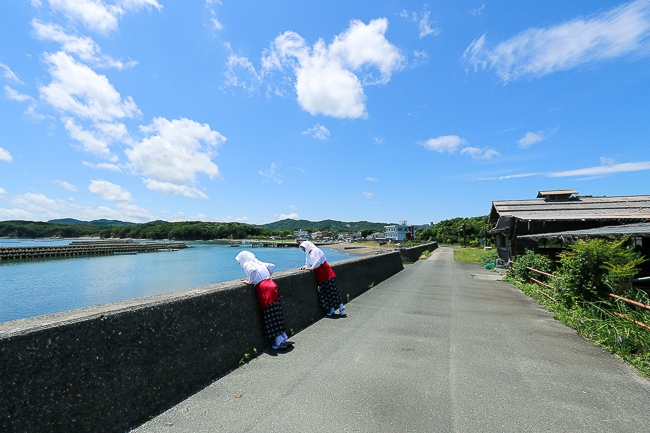
Moving northwards, I stopped by the Toba Aquarium located at the front of Toba Bay, that houses the largest number of species of fish and animals in Japan, including the country's only dugong in captivity. Children and adults alike will be entertained by the animal performances at the aquarium, and I managed to catch some of them too!
Next to the aquarium is Mikimoto Pearl Island, which I took the opportunity to visit after being wowed by all those pearls at the hotel. The island has a pearl museum which introduces the history and techniques of pearl cultivation and jewelry making. It was truly interesting to learn more about pearls and how to differentiate between real and imitation ones. The island also offers performances by Ama-san who dive for pearl oysters in traditional diving outfits and goggles.
There are more places to explore in the Ise-Shima area, but I was running short of time and had to end my sojourn to the region. From the Mikimoto Pearl Island, it was a short walk to Toba Station to catch the train back home, dreaming about the seafood lunch and the sea, shining like pearls.




| previous post |
| next post |